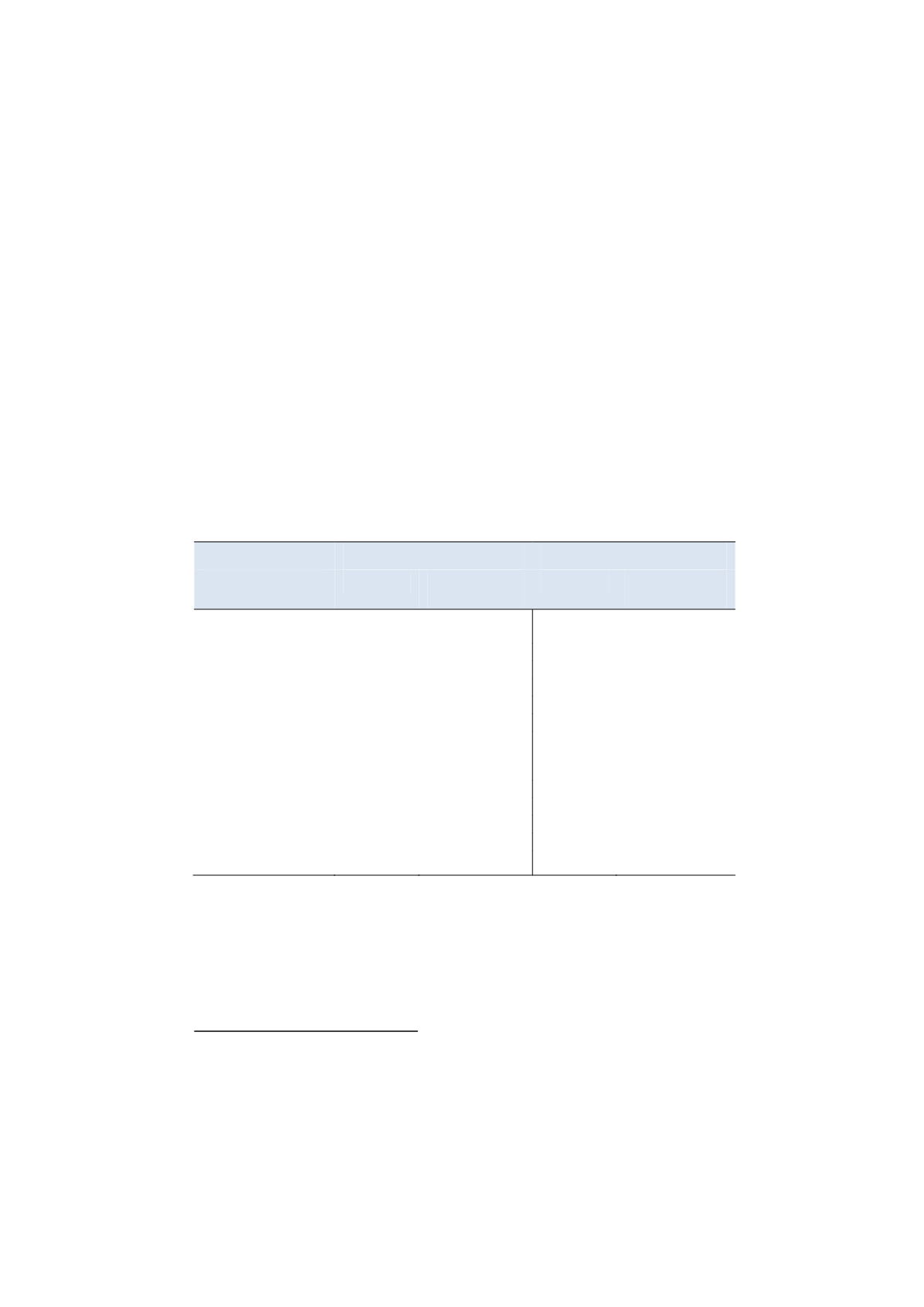
23(30)
To enable precise estimates of sibling differences, we need a larger data
set than the one used in the previous analysis. The following analysis is
based on all parents and their biological children who are aged between
16 and 65 during the observation period 2003 to 2008.
21
The children in
this sample are born between 1958 and 1988 and the children and their
parents are observed during the same time period.
22
7.1
Descriptive statistics
The study population is presented in Table 7. Firstly, as expected, children
of parents with sickness absence have on average more sickness absence
than children of parents without sickness absence. Secondly, firstborn
children are on average more absent due to sickness than their younger
siblings. This difference can be explained by the fact that firstborn children
on average are older when observed. Finally, most parents have been
absent due to sickness; about two-thirds of all children have parents with
their own sickness (here we compare the number of observations in the
two samples presented in Table 7).
23
Table 7.
Sickness absence divided by birth order and whether the
parents have sickness absence or not
Daughters
Sons
Firstborn
Younger
siblings
Firstborn
Younger
siblings
Children of parents with sickness absence:
Sickness absence
27.48
21.11
14.13
12.97
Standard deviation
74.23
65.02
56.61
53.89
Age
32.56
28.46
32.46
28.40
Standard deviation
5.50
5.28
5.47
5.26
Observations
71 403
105 859
79 873
118 370
Children of parents neither of whom
has sickness absence:
Sickness absence
14.46
11.11
8.26
6.44
Standard deviation
52.79
46.85
44.15
37.86
Age
31.24
27.39
31.25
27.40
Standard deviation
5.22
4.88
5.19
4.88
Observations
29 329
41 791
33 404
47 053
21
The corresponding estimates for the previously used sample are similar in sign
and magnitude but they are unprecisely estimated.
22
The reason why we include the parents in this analysis is that we want to
distinguish between children of parents who have been absent due to sickness
themselves and children of parents who have not. Thus, in this analysis, it is not
equally important as in the previous analysis to observe parents and their children
at the same age.
23
According to our definition, we only require that one parent in the parent couple
has at least one day absent due to sickness.


